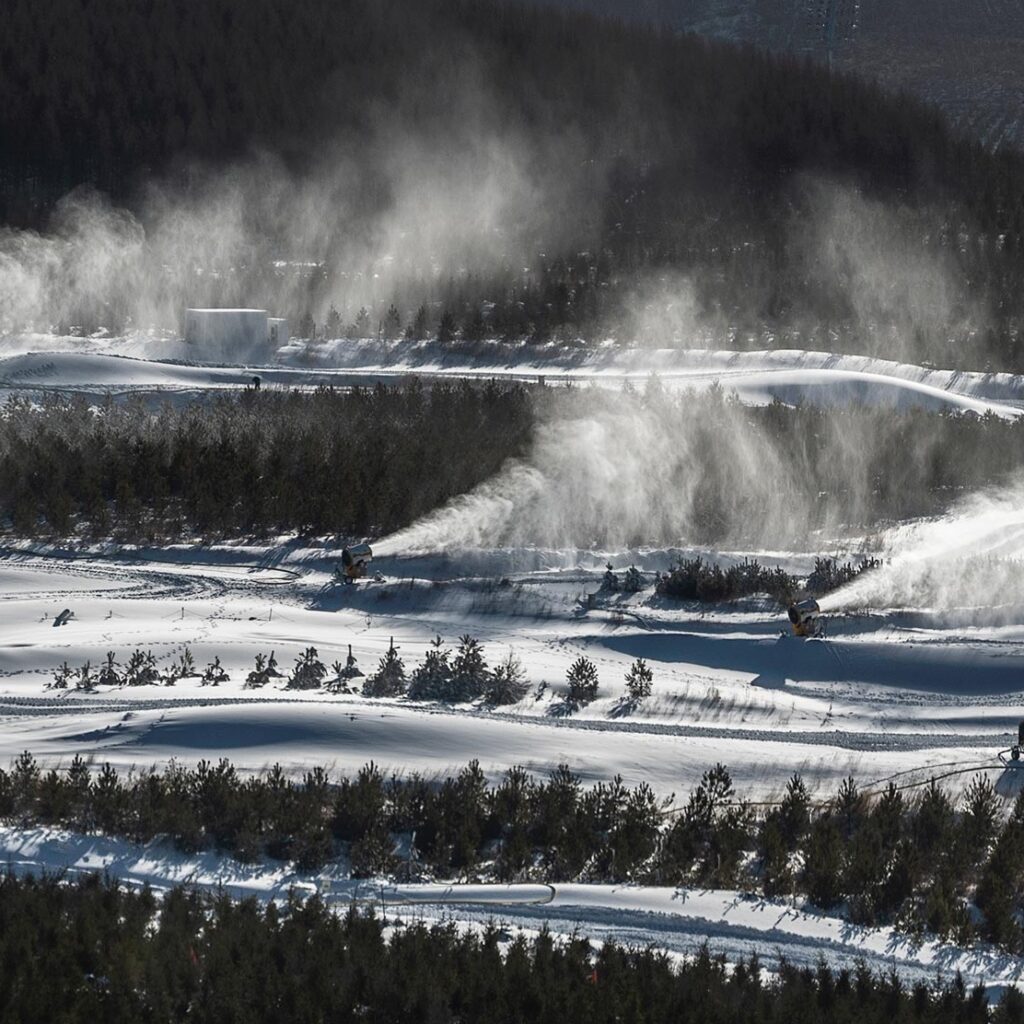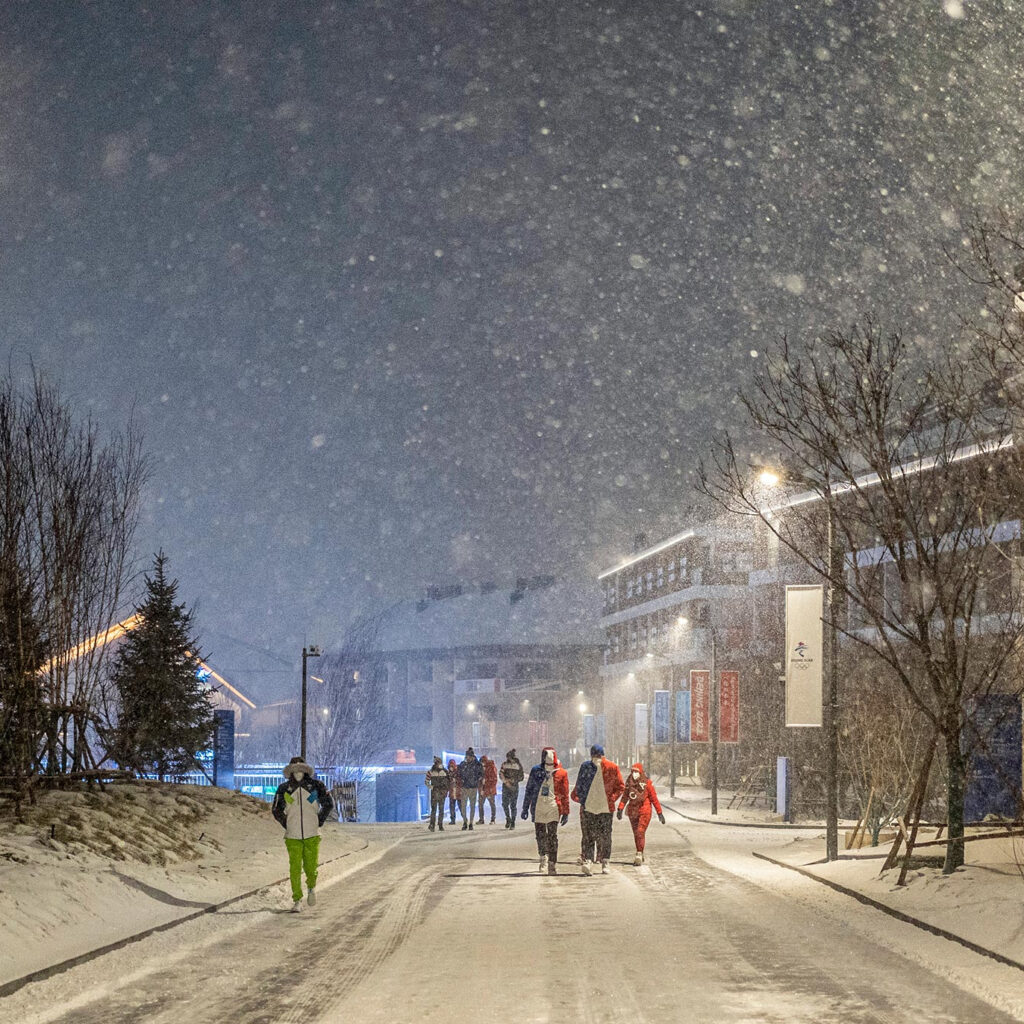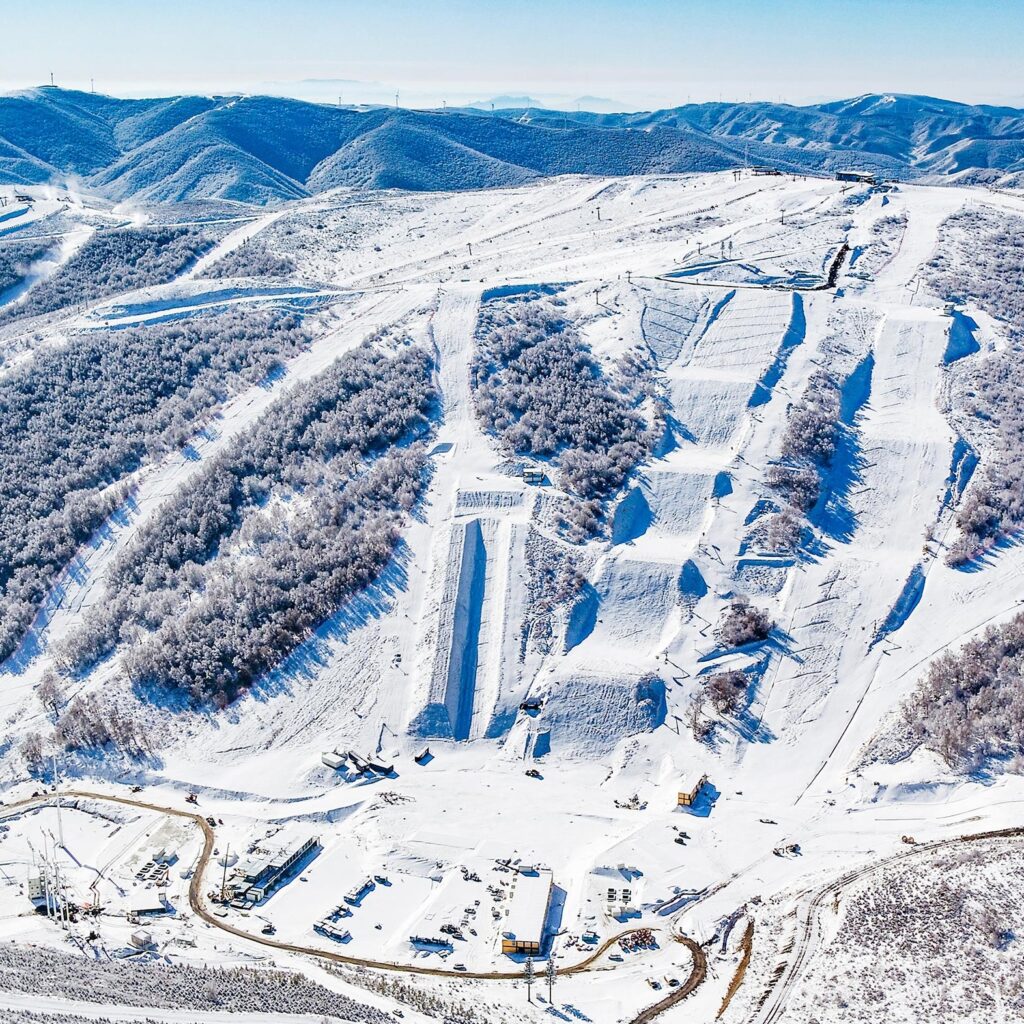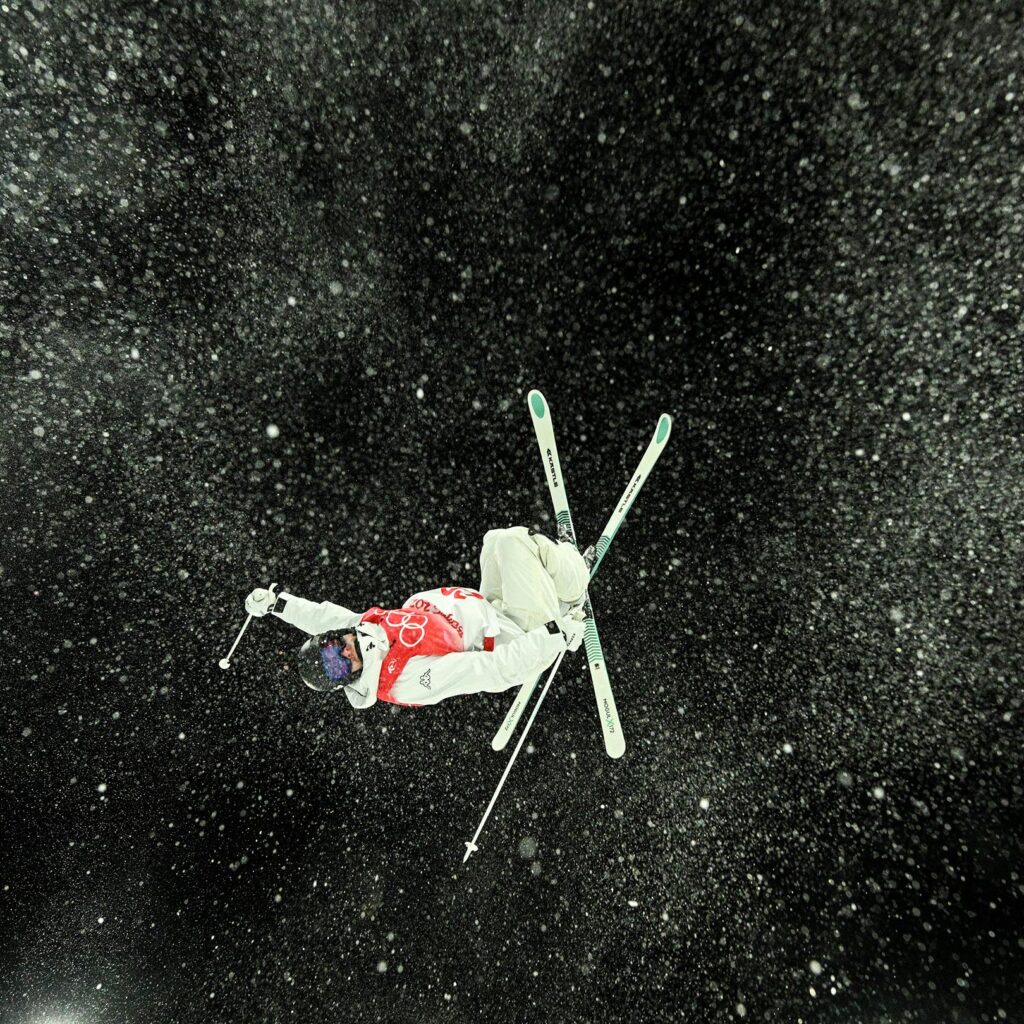06 Feb 2022 – The snowflake played a central role at the Opening Ceremony of the Olympic Winter Games Beijing 2022, where its diversity was used in numerous different contexts during the show. But snow’s central role is not limited to the creative field. On the field of play too, many of the Olympic winter sports rely on it for their events.
With the impacts of climate change accelerating, snow conditions in many parts of the world vary significantly from year to year. This is why snow, and in particular the use of artificial snow, have been a topic of discussion for many editions of the Games now.
Speaking at a recent media briefing, Bernhard Russi, Chairman of the International Skiing Federation (FIS)’s Alpine Committee, commented when asked about the use of artificial snow:
“This is not new. Already over the past five to ten years, we have been skiing only on man-made snow. Sometimes it is a mixture together with natural snow, but in order to have a perfect course for Alpine racing, you need man-made snow to get the right quality.”
At the same briefing, Wei Qinghua, Mountain Operation Manager of Zhangjiakou Guyangshu Cluster for the Beijing Games, highlighted the measures that the Beijing organisers have taken to minimise the environmental impact of their artificial snow production:
“In the entire Zhangjaikou venue cluster, water used for snow making mainly comes from rainfall and surface runoff, and the water can be recycled,” he said. “For water from melted snow, we have a reservoir and two lakes which can store it so that it can then be used for agriculture, irrigation, tourism and landscaping.”
With artificial snow taking on an increasingly important role in snow sports due to climate change, here are nine questions and answers to help you better understand how artificial snow is being used at Beijing 2022, and what the IOC is doing to help fight climate change.
1. Is Beijing 2022 the first edition of the Olympic Winter Games to use artificial snow?
No, sports events in every part of the world – including the Olympic Games and FIS World Cup races – have used artificial snow for decades. Used widely in elite competitions, artificial snow guarantees the quality and consistency of the courses.
Man-made snow has been used at previous Olympic Winter Games. Vancouver 2010, Sochi 2014 and PyeongChang 2018 all relied partially on manufactured snow.
Artificial snow is also widely used for recreational skiing in Europe, the Americas, Oceania and countries in Asia where skiing has been a popular winter sport for years.




2. Will Beijing 2022 rely on 100 per cent artificial snow?
The Guyangshu Cluster in Zhangjiakou has seen around 30cm of snow fall this year, which means that around 10 per cent of the snow used there for Beijing 2022 competitions is natural. This natural snow has been collected and is being re-used.
The percentage of artificial snow used in Yanqing is close to 100.
3. What are the environmental impacts of using artificial snow during the Games?
Every effort has been made to minimise the environmental impact.
The snow-making equipment at Beijing 2022 has used 100 per cent renewable energy since the beginning of snow production.
A series of water-conserving and recycling designs have been put into place to optimise water usage for snowmaking.
To make the snow, water – which comes mainly from rainfall and surface run-off – is pumped from nearby reservoirs and water plants. At the end of the season, snow melt is captured so that it can be reused for snow-making, irrigation and other uses.
No chemicals are used in the snow-making process, to minimise impact on the local ecosystem.
Snow farming is also used, which involves preserving snow during the summer months – a standard practice in resorts across the globe.
Beijing 2022 is producing snow in line with global standards and working in consultation with international snowmaking experts, including the FIS. It is using state-of-the-art technology, which requires 20 per cent less water than traditional systems.
The Beijing 2022 Games are taking place in regions with consistently low winter temperatures, which makes snow production more efficient. In Yanqing, February temperatures range between -9C and -1.1C. In Zhangjiakou, they range between -10.8C and -2.2C.
Unlike many ski resorts where temperature fluctuations cause snow to melt many times during a season, the low temperatures in the Beijing 2022 competition zones mean that constant reproduction of snow is not required.
4. What economic and social impact will there be when water is taken to make snow in the area?
According to the Beijing 2022 Organising Committee, water usage for the Games will not impact nearby residents’ consumption or agricultural needs.
Rather, Beijing 2022 is using the Games as an opportunity to leverage new business sectors, creating new jobs for many, including in tourism and winter sports.
Zhangjiakou is already becoming China’s largest ski resort. In 2019, it received more than 86 million tourists and revenue of over RMB 100 billion, up by over 20 per cent on the previous year.
In Yanqing, preparations for the Games drove a 35.2 per cent growth in disposable income per capita between 2015 and 2019. One in five residents of Chongli, a municipality in the Zhangjiakou region, are now employed in the snow-sports industry.
5. How much water will you need to make snow for the Games?
According to the Beijing 2022 pre-Games Sustainability Report, the total water demand of the Yanqing Zone during Games time (November 2021 to March 2022) is estimated at about 890,000 cubic metres, accounting for 0.4 per cent of Yanqing District’s water resources.
After the Games, the total annual water demand of the Yanqing Zone will not exceed 1.24 million cubic metres, accounting for 0.6 per cent of the water resources in Yanqing.
The water demand of the Zhangjiakou Zone during Games time (November 2021 to March 2022) is 1.9 million cubic metres, accounting for 2.4 per cent of Chongli District’s water resources. After the Games, the annual water demand will be 2.054 million cubic metres, accounting for 2.6 per cent of water resources in Chongli.
6. Does artificial snow make skiing more dangerous?
No. The controllable and adaptable nature of man-made snow makes it a better fit than the natural version for developing ski courses for elite racing. Thanks to its density and consistency, artificial snow offers consistent and predictable slope conditions.
Artificial snow is used regularly at FIS World Cup races, as well as other elite competitions, and does not make the courses more dangerous. On the contrary, it creates a more consistent surface from the top to the bottom, or start to finish, of a course.
The iciness and density of the surfaces is dependent on the needs of the given competitions and the preparation of the course, not on the source of the snow.
7. Given its unreliable snow, why was Beijing chosen to host the Games?
Meteorological data is analysed as part of the selection process for any Olympic host. For the Olympic Winter Games, a host region must have sufficiently cold temperatures over a sufficiently long period of time.
Beijing 2022’s key objective is to engage 300 million people in winter sports. This will change global winter sport forever, and was one of the key reasons the Games were awarded to Beijing. The objective has already been surpassed, bringing a range of socio-economic benefits to the three Beijing 2022 competition zones.
When organising the Games, both the hosts and the IOC weigh the environmental impact with the benefits and opportunities. In the case of Beijing 2022, the economic and social opportunities created by the Games have already helped reduce inequalities between rural and urban areas. They have boosted local economies and improved the livelihoods of many.
8. How will climate change affect the choice of future Winter Olympic hosts?
As part of the IOC’s new approach to selecting Olympic hosts, two permanent Future Host Commissions representing stakeholders from across the Olympic Movement have been appointed to oversee the process. The Commissions have a dual role, to:
- Explore, monitor and encourage interest in hosting the Olympic Games, the Olympic Winter Games and Youth Olympic Games, and make strategic recommendations to the IOC Executive Board; and
- Study the long-term opportunities and challenges related to hosting, including climate change.
Both Commissions are currently studying this challenge.
All potential hosts for the Olympic and Olympic Winter Games must demonstrate that their Games proposal aligns with their long-term socio-economic development plans, to improve the region for their population.
9. What is the IOC doing to help address climate change?
The IOC recognises the growing seriousness and urgency of addressing the climate crisis, and is constantly increasing its ambition to do so.
With climate change impacting temperatures across the globe, sport – like many other fields – is increasingly affected by it, both in winter and in summer.
While all upcoming Games editions are required to be carbon neutral, from 2030 onwards the IOC will oblige all Games to be “climate positive”. Organisers will be required to reduce the direct and indirect emissions of the Games, compensate more than the remaining ones, and create lasting zero-carbon solutions for the Games and beyond.
Paris 2024 has committed to achieving this goal already for 2024.
The IOC itself will halve its own emissions by 2030 and create an Olympic Forest to become climate positive in 2024.
The IOC is also using its influence to encourage others in the sports world to take action against climate change. In 2018, together with UN Climate Change, it co-launched the Sports for Climate Action Framework, which aims to create a climate action plan for sport. The IOC is working closely with International Sports Federations and National Olympic Committees to implement this.
Related Links
- Beijing 2022 Pre-Games Sustainability Report outlines climate solutions, development of winter sports and regional regeneration in China
- Future Host Election
- Olympic Games to become “climate positive” from 2030
- Paris 2024 commits to staging climate-positive Olympic and Paralympic Games
- IOC leading the way on climate change – commits to cutting its greenhouse gas emissions by 50 per cent by 2030
- IOC reveals details of its “Olympic Forest” project
- IOC takes leadership role in the U

Rod Washington: Rod is a blogger, writer, filmmaker, photographer, daydreamer who likes to cook. Rod produces and directs the web series, CUPIC: Diary of an Investigator. He also produces news and documentary video projects. Check out his podcast StoriesThisMoment at https://m3e.d71.myftpupload.com/stm-tncn-podcasts/

